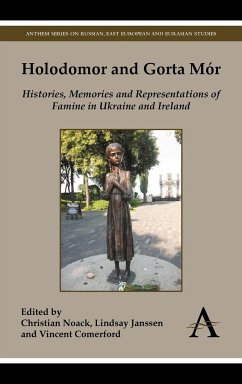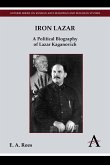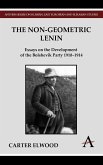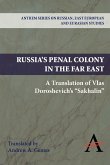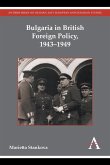Holodomor and Gorta Mór
Histories, Memories and Representations of Famine in Ukraine and Ireland
Herausgeber: Noack, Christian; Comerford, Vincent; Janssen, Lindsay
Holodomor and Gorta Mór
Histories, Memories and Representations of Famine in Ukraine and Ireland
Herausgeber: Noack, Christian; Comerford, Vincent; Janssen, Lindsay
- Gebundenes Buch
- Merkliste
- Auf die Merkliste
- Bewerten Bewerten
- Teilen
- Produkt teilen
- Produkterinnerung
- Produkterinnerung
A comparative study of the famines of Ireland (1845-51) and Ukraine (1932?33), and how historical experiences of famine were translated into narratives that supported political claims for independent national statehood.
Andere Kunden interessierten sich auch für
![Holodomor and Gorta Mór Holodomor and Gorta Mór]() Holodomor and Gorta Mór44,99 €
Holodomor and Gorta Mór44,99 €![Bulgaria in British Foreign Policy, 1943-1949 Bulgaria in British Foreign Policy, 1943-1949]() Marietta StankovaBulgaria in British Foreign Policy, 1943-1949103,99 €
Marietta StankovaBulgaria in British Foreign Policy, 1943-1949103,99 €![Iron Lazar Iron Lazar]() E. A. ReesIron Lazar44,99 €
E. A. ReesIron Lazar44,99 €![A History of Russia Volume 1 A History of Russia Volume 1]() Walter G. MossA History of Russia Volume 146,99 €
Walter G. MossA History of Russia Volume 146,99 €![The Non-Geometric Lenin The Non-Geometric Lenin]() Carter ElwoodThe Non-Geometric Lenin103,99 €
Carter ElwoodThe Non-Geometric Lenin103,99 €![Russia's Penal Colony in the Far East Russia's Penal Colony in the Far East]() Vlas DoroshevichRussia's Penal Colony in the Far East56,99 €
Vlas DoroshevichRussia's Penal Colony in the Far East56,99 €![Bulgaria in British Foreign Policy, 1943-1949 Bulgaria in British Foreign Policy, 1943-1949]() Marietta StankovaBulgaria in British Foreign Policy, 1943-194945,99 €
Marietta StankovaBulgaria in British Foreign Policy, 1943-194945,99 €-
-
-
A comparative study of the famines of Ireland (1845-51) and Ukraine (1932?33), and how historical experiences of famine were translated into narratives that supported political claims for independent national statehood.
Produktdetails
- Produktdetails
- Verlag: Anthem Press
- Seitenzahl: 288
- Erscheinungstermin: 15. November 2012
- Englisch
- Abmessung: 235mm x 157mm x 22mm
- Gewicht: 622g
- ISBN-13: 9780857285577
- ISBN-10: 0857285572
- Artikelnr.: 36054573
- Herstellerkennzeichnung
- Libri GmbH
- Europaallee 1
- 36244 Bad Hersfeld
- gpsr@libri.de
- Verlag: Anthem Press
- Seitenzahl: 288
- Erscheinungstermin: 15. November 2012
- Englisch
- Abmessung: 235mm x 157mm x 22mm
- Gewicht: 622g
- ISBN-13: 9780857285577
- ISBN-10: 0857285572
- Artikelnr.: 36054573
- Herstellerkennzeichnung
- Libri GmbH
- Europaallee 1
- 36244 Bad Hersfeld
- gpsr@libri.de
Edited by Christian Noack, Lindsay Janssen and Vincent Comerford
List of Figures; Acknowledgements; Introduction: ‘Holodomor and Gorta Mór:
Histories, Memories and Representations of Famine in Ukraine and Ireland’ –
Christian Noack, Lindsay Janssen and Vincent Comerford; PART I: HISTORIES,
HISTORIOGRAPHY AND POLITICS: Chapter 1: ‘Holodomor in Ukraine 1932–1933: An
Interpretation of Facts’ – Stanislav V. Kulchytskyi (Translated from
Russian by Christian Noack); Chapter 2: ‘Ethnic Issues in the Famine of
1932–1933 in Ukraine’ – David R. Marples; Chapter 3: ‘Grievance, Scourge or
Shame? The Complexity of Attitudes to Ireland’s Great Famine’ – Vincent
Comerford; PART II: PUBLIC COMMEMORATION: Chapter 4: ‘History and National
Identity Construction: The Great Famine in Irish and Ukrainian History
Textbooks’ – Jan Germen Janmaat; Chapter 5: ‘Teaching Hunger: The Great
Irish Famine Curriculum in New York State Schools’ – Maureen O. Murphy;
Chapter 6: ‘Remembering Famine Orphans: The Transmission of Famine Memory
between Ireland and Quebec’ – Jason King; Chapter 7: ‘The Irish Famine and
Commemorative Culture’ – Emily Mark-FitzGerald; PART III: TRAUMA AND
VICTIMISATION: Chapter 8: ‘Holodomor and the Politics of Memory in Ukraine
after Independence’ – Heorhiy Kasianov (Translated from Russian by
Christian Noack); Chapter 9: ‘The Great Irish Famine in Stories for
Children in the Closing Decades of the Twentieth Century’ – Celia Keenan;
Chapter 10: ‘Collective Trauma in a Feature Film: “Golod-33” as
One-of-a-Kind’ – Olga Papash (Translated from Russian by Christian Noack);
PART IV: NEW SOURCES AND NEW APPROACHES TO THE IRISH AND UKRAINIAN FAMINES:
Chapter 11: ‘In Search of New Sources: Polish Diplomatic and Intelligence
Reports on the Holodomor’ – Jan Jacek Bruski (Translated from Polish by
Alicja Waligóra-Zblewska and Christian Noack); Chapter 12: ‘Oral History,
Oral Tradition and the Great Famine’ – Maura Cronin; Chapter 13: ‘Mapping
Population Change in Ireland 1841–1851: Quantitative Analysis Using
Historical GIS’ – Mary Kelly, A. Stewart Fotheringham and Martin Charltoni;
Index
Histories, Memories and Representations of Famine in Ukraine and Ireland’ –
Christian Noack, Lindsay Janssen and Vincent Comerford; PART I: HISTORIES,
HISTORIOGRAPHY AND POLITICS: Chapter 1: ‘Holodomor in Ukraine 1932–1933: An
Interpretation of Facts’ – Stanislav V. Kulchytskyi (Translated from
Russian by Christian Noack); Chapter 2: ‘Ethnic Issues in the Famine of
1932–1933 in Ukraine’ – David R. Marples; Chapter 3: ‘Grievance, Scourge or
Shame? The Complexity of Attitudes to Ireland’s Great Famine’ – Vincent
Comerford; PART II: PUBLIC COMMEMORATION: Chapter 4: ‘History and National
Identity Construction: The Great Famine in Irish and Ukrainian History
Textbooks’ – Jan Germen Janmaat; Chapter 5: ‘Teaching Hunger: The Great
Irish Famine Curriculum in New York State Schools’ – Maureen O. Murphy;
Chapter 6: ‘Remembering Famine Orphans: The Transmission of Famine Memory
between Ireland and Quebec’ – Jason King; Chapter 7: ‘The Irish Famine and
Commemorative Culture’ – Emily Mark-FitzGerald; PART III: TRAUMA AND
VICTIMISATION: Chapter 8: ‘Holodomor and the Politics of Memory in Ukraine
after Independence’ – Heorhiy Kasianov (Translated from Russian by
Christian Noack); Chapter 9: ‘The Great Irish Famine in Stories for
Children in the Closing Decades of the Twentieth Century’ – Celia Keenan;
Chapter 10: ‘Collective Trauma in a Feature Film: “Golod-33” as
One-of-a-Kind’ – Olga Papash (Translated from Russian by Christian Noack);
PART IV: NEW SOURCES AND NEW APPROACHES TO THE IRISH AND UKRAINIAN FAMINES:
Chapter 11: ‘In Search of New Sources: Polish Diplomatic and Intelligence
Reports on the Holodomor’ – Jan Jacek Bruski (Translated from Polish by
Alicja Waligóra-Zblewska and Christian Noack); Chapter 12: ‘Oral History,
Oral Tradition and the Great Famine’ – Maura Cronin; Chapter 13: ‘Mapping
Population Change in Ireland 1841–1851: Quantitative Analysis Using
Historical GIS’ – Mary Kelly, A. Stewart Fotheringham and Martin Charltoni;
Index
List of Figures; Acknowledgements; Introduction: ‘Holodomor and Gorta Mór:
Histories, Memories and Representations of Famine in Ukraine and Ireland’ –
Christian Noack, Lindsay Janssen and Vincent Comerford; PART I: HISTORIES,
HISTORIOGRAPHY AND POLITICS: Chapter 1: ‘Holodomor in Ukraine 1932–1933: An
Interpretation of Facts’ – Stanislav V. Kulchytskyi (Translated from
Russian by Christian Noack); Chapter 2: ‘Ethnic Issues in the Famine of
1932–1933 in Ukraine’ – David R. Marples; Chapter 3: ‘Grievance, Scourge or
Shame? The Complexity of Attitudes to Ireland’s Great Famine’ – Vincent
Comerford; PART II: PUBLIC COMMEMORATION: Chapter 4: ‘History and National
Identity Construction: The Great Famine in Irish and Ukrainian History
Textbooks’ – Jan Germen Janmaat; Chapter 5: ‘Teaching Hunger: The Great
Irish Famine Curriculum in New York State Schools’ – Maureen O. Murphy;
Chapter 6: ‘Remembering Famine Orphans: The Transmission of Famine Memory
between Ireland and Quebec’ – Jason King; Chapter 7: ‘The Irish Famine and
Commemorative Culture’ – Emily Mark-FitzGerald; PART III: TRAUMA AND
VICTIMISATION: Chapter 8: ‘Holodomor and the Politics of Memory in Ukraine
after Independence’ – Heorhiy Kasianov (Translated from Russian by
Christian Noack); Chapter 9: ‘The Great Irish Famine in Stories for
Children in the Closing Decades of the Twentieth Century’ – Celia Keenan;
Chapter 10: ‘Collective Trauma in a Feature Film: “Golod-33” as
One-of-a-Kind’ – Olga Papash (Translated from Russian by Christian Noack);
PART IV: NEW SOURCES AND NEW APPROACHES TO THE IRISH AND UKRAINIAN FAMINES:
Chapter 11: ‘In Search of New Sources: Polish Diplomatic and Intelligence
Reports on the Holodomor’ – Jan Jacek Bruski (Translated from Polish by
Alicja Waligóra-Zblewska and Christian Noack); Chapter 12: ‘Oral History,
Oral Tradition and the Great Famine’ – Maura Cronin; Chapter 13: ‘Mapping
Population Change in Ireland 1841–1851: Quantitative Analysis Using
Historical GIS’ – Mary Kelly, A. Stewart Fotheringham and Martin Charltoni;
Index
Histories, Memories and Representations of Famine in Ukraine and Ireland’ –
Christian Noack, Lindsay Janssen and Vincent Comerford; PART I: HISTORIES,
HISTORIOGRAPHY AND POLITICS: Chapter 1: ‘Holodomor in Ukraine 1932–1933: An
Interpretation of Facts’ – Stanislav V. Kulchytskyi (Translated from
Russian by Christian Noack); Chapter 2: ‘Ethnic Issues in the Famine of
1932–1933 in Ukraine’ – David R. Marples; Chapter 3: ‘Grievance, Scourge or
Shame? The Complexity of Attitudes to Ireland’s Great Famine’ – Vincent
Comerford; PART II: PUBLIC COMMEMORATION: Chapter 4: ‘History and National
Identity Construction: The Great Famine in Irish and Ukrainian History
Textbooks’ – Jan Germen Janmaat; Chapter 5: ‘Teaching Hunger: The Great
Irish Famine Curriculum in New York State Schools’ – Maureen O. Murphy;
Chapter 6: ‘Remembering Famine Orphans: The Transmission of Famine Memory
between Ireland and Quebec’ – Jason King; Chapter 7: ‘The Irish Famine and
Commemorative Culture’ – Emily Mark-FitzGerald; PART III: TRAUMA AND
VICTIMISATION: Chapter 8: ‘Holodomor and the Politics of Memory in Ukraine
after Independence’ – Heorhiy Kasianov (Translated from Russian by
Christian Noack); Chapter 9: ‘The Great Irish Famine in Stories for
Children in the Closing Decades of the Twentieth Century’ – Celia Keenan;
Chapter 10: ‘Collective Trauma in a Feature Film: “Golod-33” as
One-of-a-Kind’ – Olga Papash (Translated from Russian by Christian Noack);
PART IV: NEW SOURCES AND NEW APPROACHES TO THE IRISH AND UKRAINIAN FAMINES:
Chapter 11: ‘In Search of New Sources: Polish Diplomatic and Intelligence
Reports on the Holodomor’ – Jan Jacek Bruski (Translated from Polish by
Alicja Waligóra-Zblewska and Christian Noack); Chapter 12: ‘Oral History,
Oral Tradition and the Great Famine’ – Maura Cronin; Chapter 13: ‘Mapping
Population Change in Ireland 1841–1851: Quantitative Analysis Using
Historical GIS’ – Mary Kelly, A. Stewart Fotheringham and Martin Charltoni;
Index

